Neuschwanstein Castle: The Fairy-Tale Fortress of Bavaria
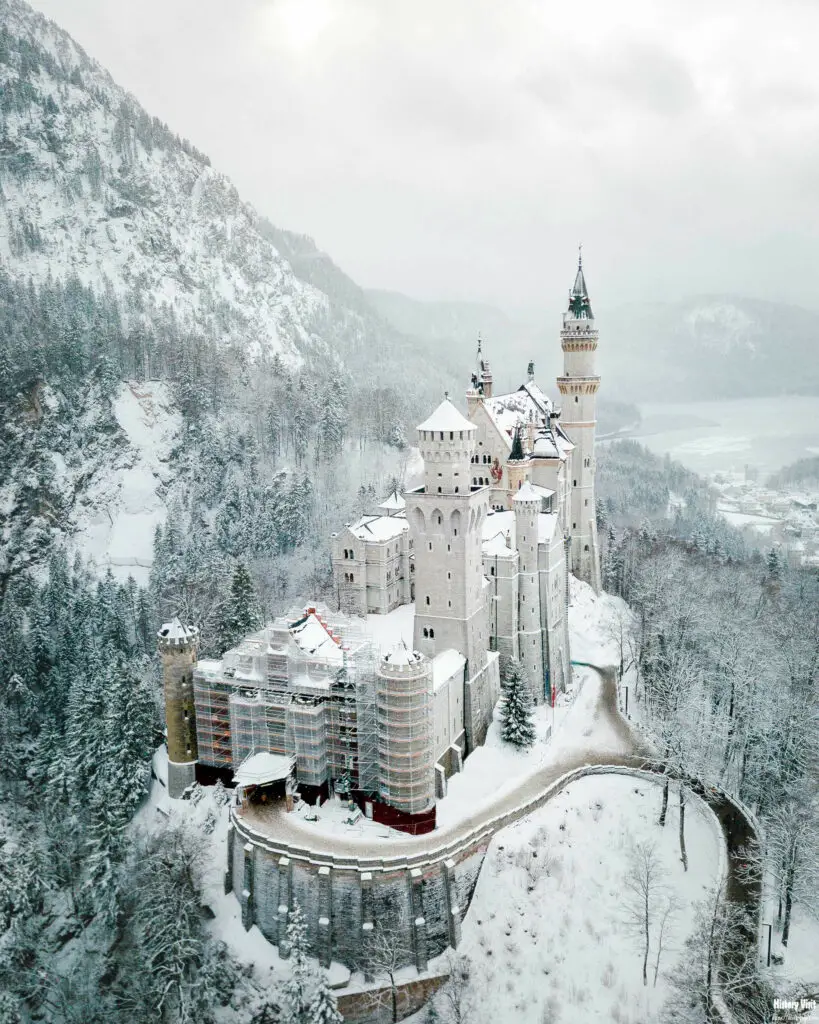
Introduction
Neuschwanstein Castle, perched high on a rugged hill in Bavaria, Germany, is the epitome of a fairy-tale fortress. Its striking turrets, picturesque setting, and romantic design have made it one of the most iconic castles in the world. Often referred to as the “Disney Castle,” Neuschwanstein inspired Walt Disney’s Sleeping Beauty Castle, cementing its place in popular culture and the collective imagination.
Commissioned by King Ludwig II of Bavaria in 1869, Neuschwanstein was envisioned as a personal retreat and a homage to the operas of Richard Wagner, a composer whom Ludwig greatly admired. Despite its medieval appearance, the castle was built in the 19th century, blending romanticized medieval architecture with modern advancements of the time. The result is a stunning architectural marvel that draws millions of visitors annually.
In this article, we will explore Neuschwanstein Castle’s historical background, architectural design, cultural significance, and its transformation into a major tourist attraction. We will also delve into the myths and legends surrounding the castle, its influence on popular culture, and provide practical information for prospective visitors.
Historical Background
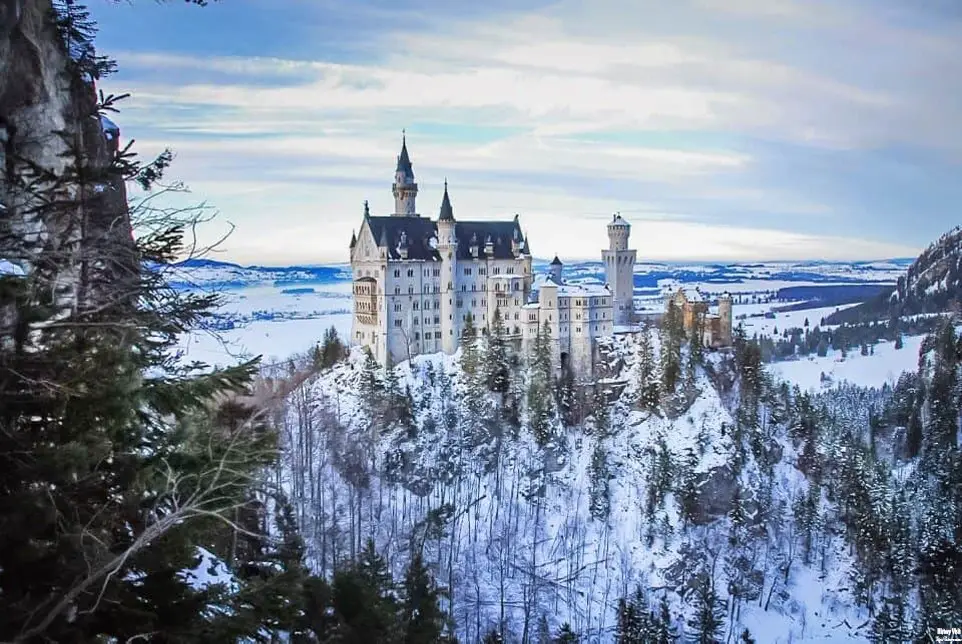
The story of Neuschwanstein Castle begins with King Ludwig II, who ascended to the throne of Bavaria in 1864 at the age of 18. Known as the “Fairy Tale King,” Ludwig was a passionate admirer of the arts, particularly the operas of Richard Wagner. Ludwig’s vision for Neuschwanstein was deeply influenced by Wagner’s works, seeking to create a fantastical retreat that mirrored the romantic and mythical themes present in Wagner’s operas.
Construction of Neuschwanstein commenced in 1869 on the ruins of two older castles: Vorderhohenschwangau and Hinterhohenschwangau. The location was chosen for its dramatic scenery, overlooking the Hohenschwangau valley near Ludwig’s childhood home. Ludwig himself was heavily involved in the design process, working closely with architect Eduard Riedel and later with Georg von Dollmann and Julius Hofmann to bring his vision to life.
The purpose of Neuschwanstein was not to serve as a defensive fortress or royal palace but as a personal sanctuary for Ludwig II. It was intended to be a place where he could retreat from the affairs of state and immerse himself in the world of myth and legend. Sadly, Ludwig did not live to see the completion of his dream; he died under mysterious circumstances in 1886, leaving the castle unfinished.
Architectural Design and Features
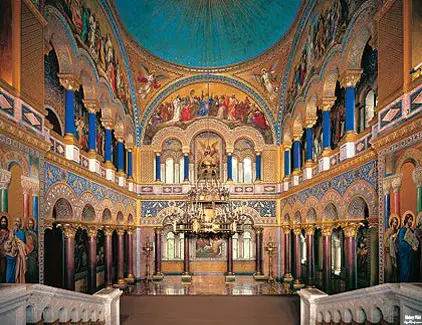
Neuschwanstein Castle is a masterpiece of Gothic Revival architecture, characterized by its intricate facades, towering turrets, and romantic interiors. The design draws heavily on medieval influences, combining elements of Romanesque, Gothic, and Byzantine styles to create a fantastical appearance. The exterior of the castle is dominated by its towering turrets and pinnacles, which give it a fairy-tale quality that captivates visitors at first glance.
One of the most impressive features of Neuschwanstein is the Throne Room, inspired by Byzantine architecture and the legendary Grail Hall from Wagner’s operas. The room’s two-story height, gilded columns, and elaborate mosaics create a sense of grandeur and opulence. Interestingly, the throne room lacks a throne, as Ludwig passed away before one could be installed.
The Singer’s Hall, another notable room, occupies the entire fourth floor of the castle’s eastern wing. This hall was designed to host musical performances and features murals depicting scenes from Wagner’s operas, particularly “Tannhäuser” and “Lohengrin.” Ludwig intended the Singer’s Hall to be a venue for private concerts, reflecting his deep love for music and the arts.
Ludwig’s bedroom is also a highlight of the castle, showcasing exquisite woodcarving that took fourteen carpenters over four years to complete. The room is adorned with murals that depict scenes from Wagner’s “Tristan and Isolde,” further emphasizing the king’s dedication to the composer’s works. The ornately decorated bed, with its canopy resembling a Gothic church spire, underscores the romantic and fantastical nature of Ludwig’s vision.
Artistic and Cultural Significance
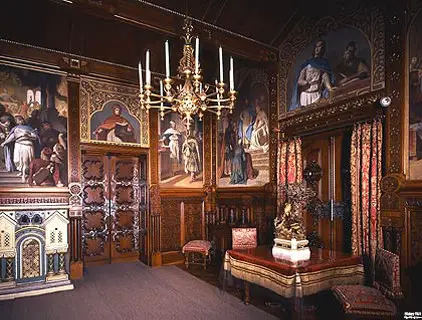
Neuschwanstein Castle is not only an architectural marvel but also a testament to King Ludwig II’s artistic vision and cultural influence. The castle’s design and interior decoration are heavily influenced by the operas of Richard Wagner, whose works explore themes of love, heroism, and myth. Ludwig’s passion for Wagner’s music is evident in the murals, sculptures, and overall aesthetic of the castle, which bring to life scenes and characters from the composer’s operas.
The artistic elements within Neuschwanstein are a blend of medieval romanticism and 19th-century craftsmanship. The murals, painted by artists such as Wilhelm Hauschild and August Spiess, depict legendary tales and mythical figures, creating a cohesive narrative throughout the castle. These artworks are not only visually stunning but also serve to immerse visitors in the fantastical world that Ludwig sought to create.
Culturally, Neuschwanstein has had a profound impact on both Bavaria and the broader world. It symbolizes the romantic ideals of the 19th century, where imagination and beauty were paramount. The castle’s influence extends beyond its walls, inspiring countless works of art, literature, and architecture. Its fairy-tale appearance and association with Disney have made it a cultural icon, recognized and revered globally.
Construction and Challenges

The construction of Neuschwanstein Castle was a monumental endeavor that faced numerous challenges. Work began in 1869, but the project would span several decades, with many elements remaining unfinished at the time of Ludwig’s death in 1886. The location itself presented significant difficulties, as the rugged terrain required extensive foundation work and innovative engineering solutions.
One of the main challenges was the financial burden that the construction placed on King Ludwig II and the Bavarian treasury. The castle was funded primarily through Ludwig’s personal finances, supplemented by loans and funds diverted from other state projects. As construction costs soared, Ludwig found himself increasingly in debt, leading to tensions with his ministers and ultimately contributing to his deposition.
Despite these challenges, the construction of Neuschwanstein saw the implementation of advanced building techniques for the era. For instance, the castle was equipped with modern amenities such as running water, central heating, and flush toilets. These innovations, combined with the romantic architectural design, make Neuschwanstein a unique fusion of medieval fantasy and 19th-century technology.
Neuschwanstein in Modern Times

Today, Neuschwanstein Castle is one of the most popular tourist attractions in Germany, drawing over 1.5 million visitors annually. Its enchanting appearance and picturesque setting make it a must-see destination for travelers from around the world. The castle’s interior, with its richly decorated rooms and artistic treasures, offers a glimpse into the world of King Ludwig II and his romantic vision.
Visitors to Neuschwanstein can explore the castle through guided tours that provide insights into its history, architecture, and the life of Ludwig II. These tours often include visits to key rooms such as the Throne Room, Singer’s Hall, and Ludwig’s bedroom, allowing tourists to appreciate the intricate details and artistic elements up close. The panoramic views from the castle’s terraces and towers are also a highlight, offering stunning vistas of the surrounding Bavarian Alps and Hohenschwangau Valley.
Preservation efforts are ongoing to maintain the castle’s structural integrity and historical authenticity. Conservation projects focus on protecting the delicate murals, repairing weathered stonework, and ensuring that modern amenities do not detract from the castle’s historical charm. These efforts are crucial in preserving Neuschwanstein for future generations, allowing it to continue enchanting visitors for years to come.
Myths and Legends
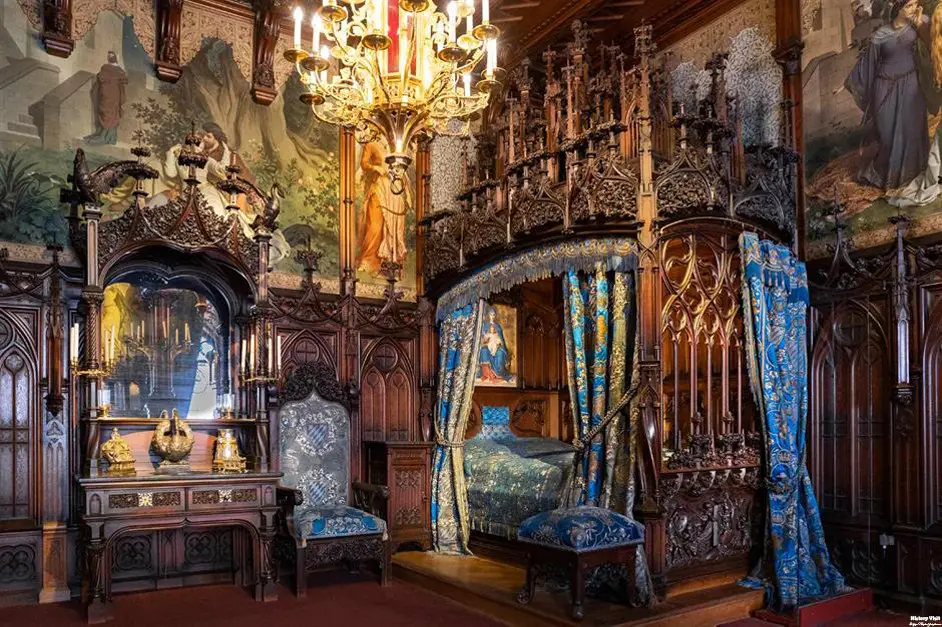
The mystique of Neuschwanstein Castle is enhanced by the numerous myths and legends that surround it, particularly those related to King Ludwig II. One of the most enduring mysteries is the circumstances of Ludwig’s death. In June 1886, just days after being declared insane and deposed, Ludwig was found dead in Lake Starnberg under suspicious circumstances. The official cause was drowning, but speculation about foul play or suicide persists to this day, adding an element of intrigue to his story.
Legends also abound about the castle itself. Some stories suggest that hidden treasures or secret passages lie within its walls, waiting to be discovered. These tales are fueled by the castle’s unfinished state and the eccentric nature of Ludwig’s reign, which left many aspects of the castle shrouded in mystery.
The association with Richard Wagner’s operas further enriches the castle’s mythos. Scenes from Wagner’s works, such as the Grail Hall and the enchanted forest, are vividly brought to life within the castle’s decor. This connection to mythical and legendary themes contributes to the castle’s fairy-tale reputation, making it a place where imagination and reality blur.
Neuschwanstein’s Influence on Popular Culture
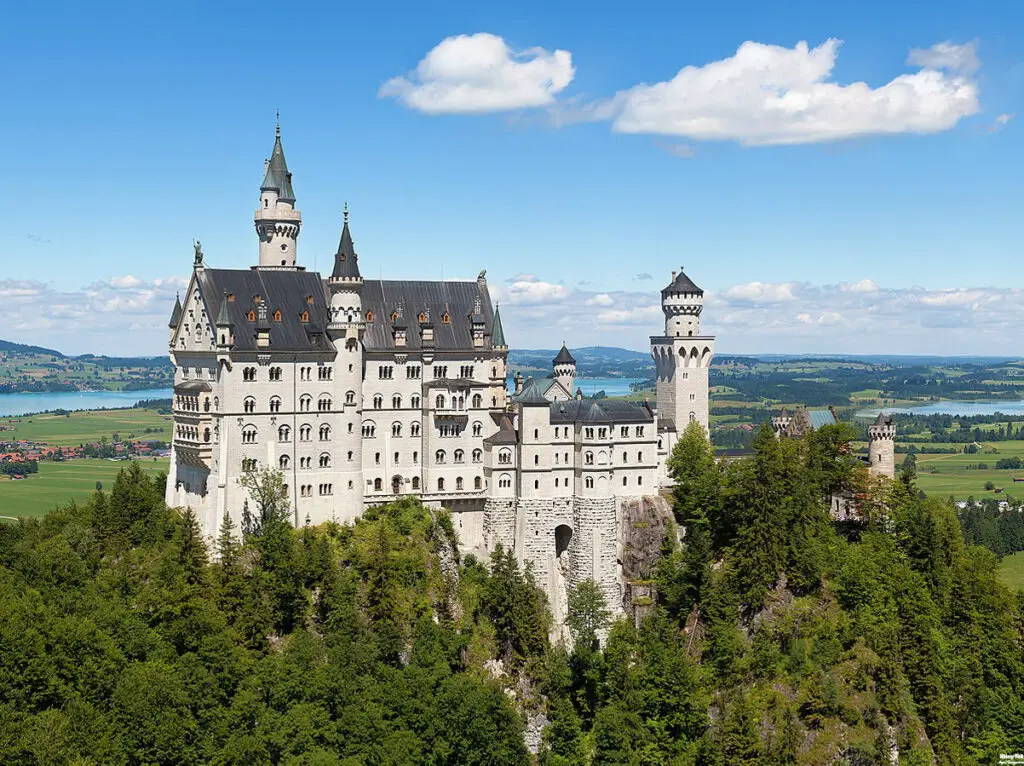
Neuschwanstein Castle’s influence extends far beyond its physical location in Bavaria. Its fairy-tale appearance and romantic history have inspired numerous works of art, literature, and film. Most notably, the castle served as the inspiration for Walt Disney’s Sleeping Beauty Castle, which has become an iconic symbol of the Disney brand and theme parks worldwide.
The castle has also appeared in various movies, television shows, and books, often representing an idealized or magical setting. Its picturesque beauty and dramatic history make it a popular choice for filmmakers and authors seeking to evoke a sense of wonder and enchantment. Neuschwanstein’s legacy in popular culture continues to grow, as it remains a source of inspiration for creators and storytellers.
Additionally, the castle’s image is frequently used in advertising and promotional materials, further cementing its status as a global icon. Its likeness can be found on postcards, posters, and souvenirs, allowing people from all over the world to take a piece of Neuschwanstein’s magic home with them. This widespread recognition underscores the castle’s enduring appeal and its place in the cultural imagination.
Visitor Information
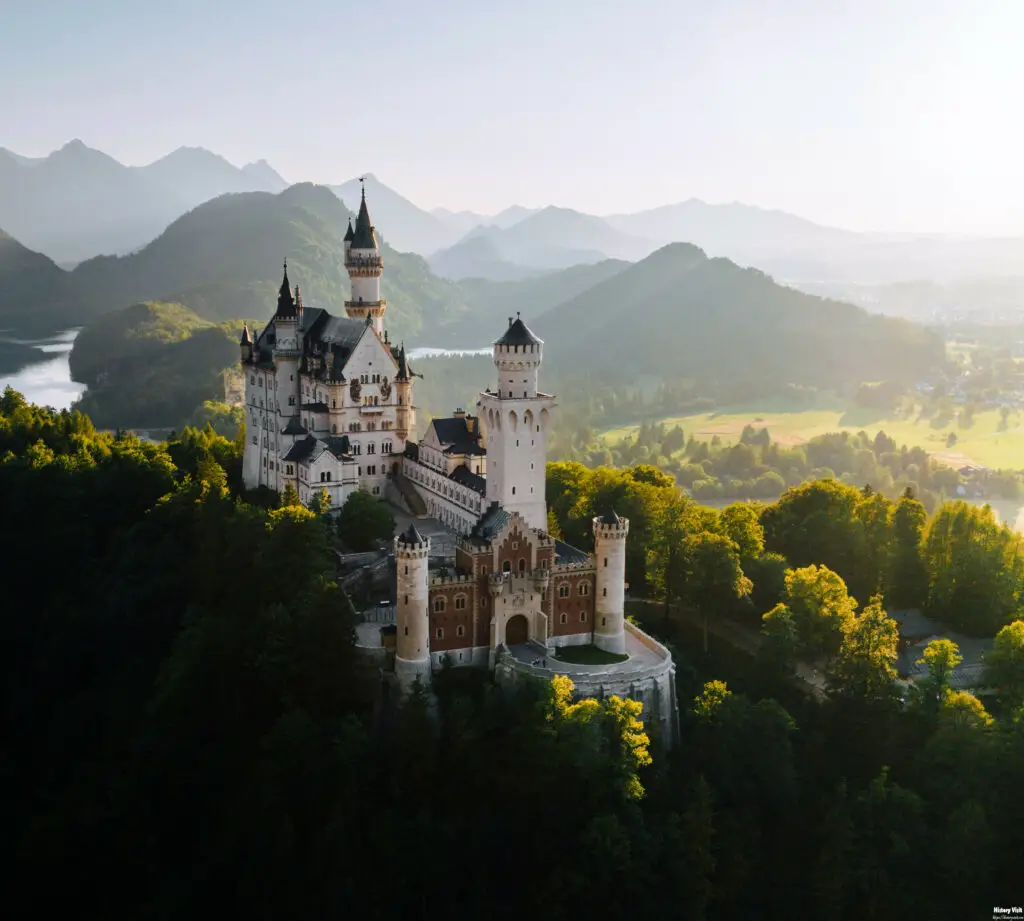
For those planning to visit Neuschwanstein Castle, timing and preparation are key to a memorable experience. The castle is open year-round, but the best times to visit are during the spring and fall when the weather is pleasant, and the crowds are smaller. Winter visits offer a different kind of magic, with the castle often covered in snow, adding to its fairy-tale appearance.
Tickets for guided tours can be purchased online or at the ticket center in the nearby village of Hohenschwangau. It’s advisable to book tickets in advance, especially during peak tourist seasons, to ensure availability and avoid long wait times. The guided tours, available in multiple languages, provide valuable insights into the castle’s history, architecture, and the life of King Ludwig II.
In addition to touring the castle, visitors can explore the surrounding area, which offers numerous hiking trails, scenic viewpoints, and the beautiful Alpsee Lake. Nearby attractions include Hohenschwangau Castle, the childhood home of Ludwig II, and the Museum of the Bavarian Kings. For accommodation, options range from charming guesthouses in Hohenschwangau to luxury hotels in the nearby town of Füssen, providing a variety of choices to suit different preferences and budgets.
Conclusion
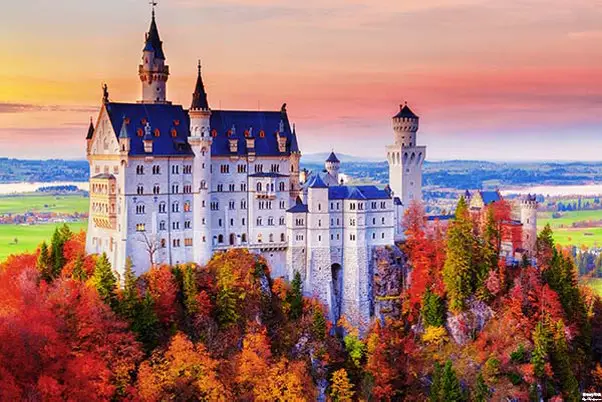
Neuschwanstein Castle stands as a testament to the vision and passion of King Ludwig II, a monarch whose dreams and artistic sensibilities have left an indelible mark on history. From its romantic architecture and artistic splendor to its intriguing myths and legends, Neuschwanstein embodies the essence of a fairy-tale castle, captivating all who behold it.
The castle’s historical significance, architectural beauty, and cultural impact make it a cherished landmark not only in Germany but around the world. Its influence on popular culture, particularly through its connection to Disney, ensures that its legacy will continue to inspire and enchant future generations.
Visiting Neuschwanstein Castle offers a unique journey into a world where history, art, and fantasy converge. It is a place where the imagination of a king has created a timeless monument, inviting all who enter to experience its magic and wonder. Whether you are drawn by its historical significance, architectural splendor, or simply the allure of a real-life fairy tale, Neuschwanstein Castle promises an unforgettable adventure.



fuga sit vitae itaque perspiciatis consequatur omnis. quas repellendus suscipit reiciendis velit sint alias laborum omnis. sit ipsam deserunt sequi reprehenderit temporibus ut nostrum aut qui ipsam qu
consequuntur et consectetur animi fugit veritatis ut sit ad totam eveniet. sapiente blanditiis incidunt doloremque perferendis est mollitia ratione et enim alias nihil facilis cupiditate voluptas magn
alias blanditiis non nam eligendi sint et ut sapiente tempora quos et est suscipit consequatur aut. harum autem enim sint soluta perferendis quia sed molestiae id totam et culpa itaque quisquam dolore